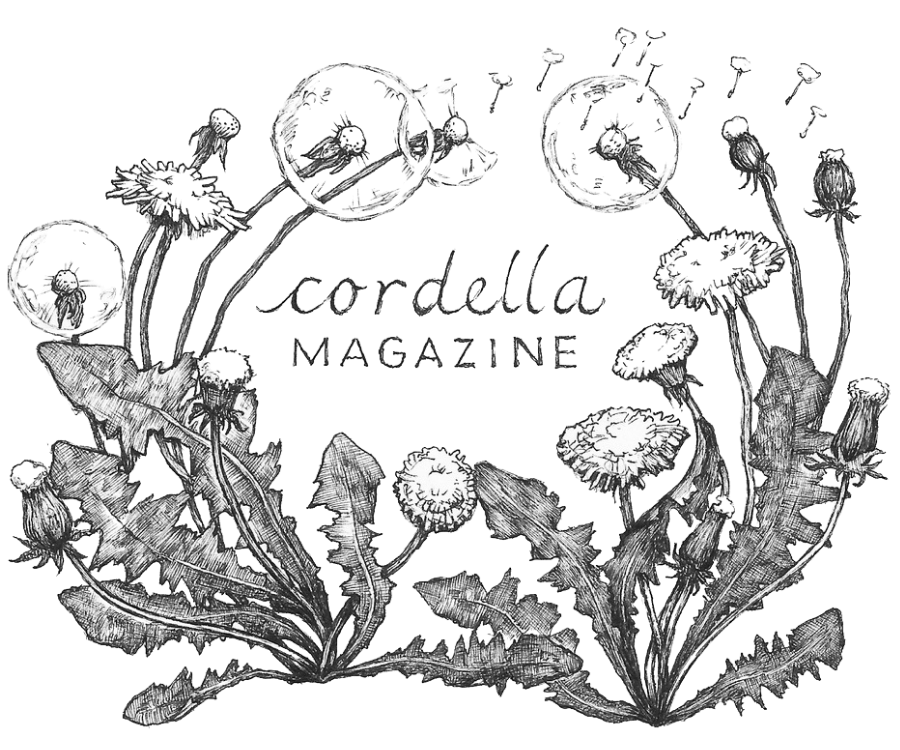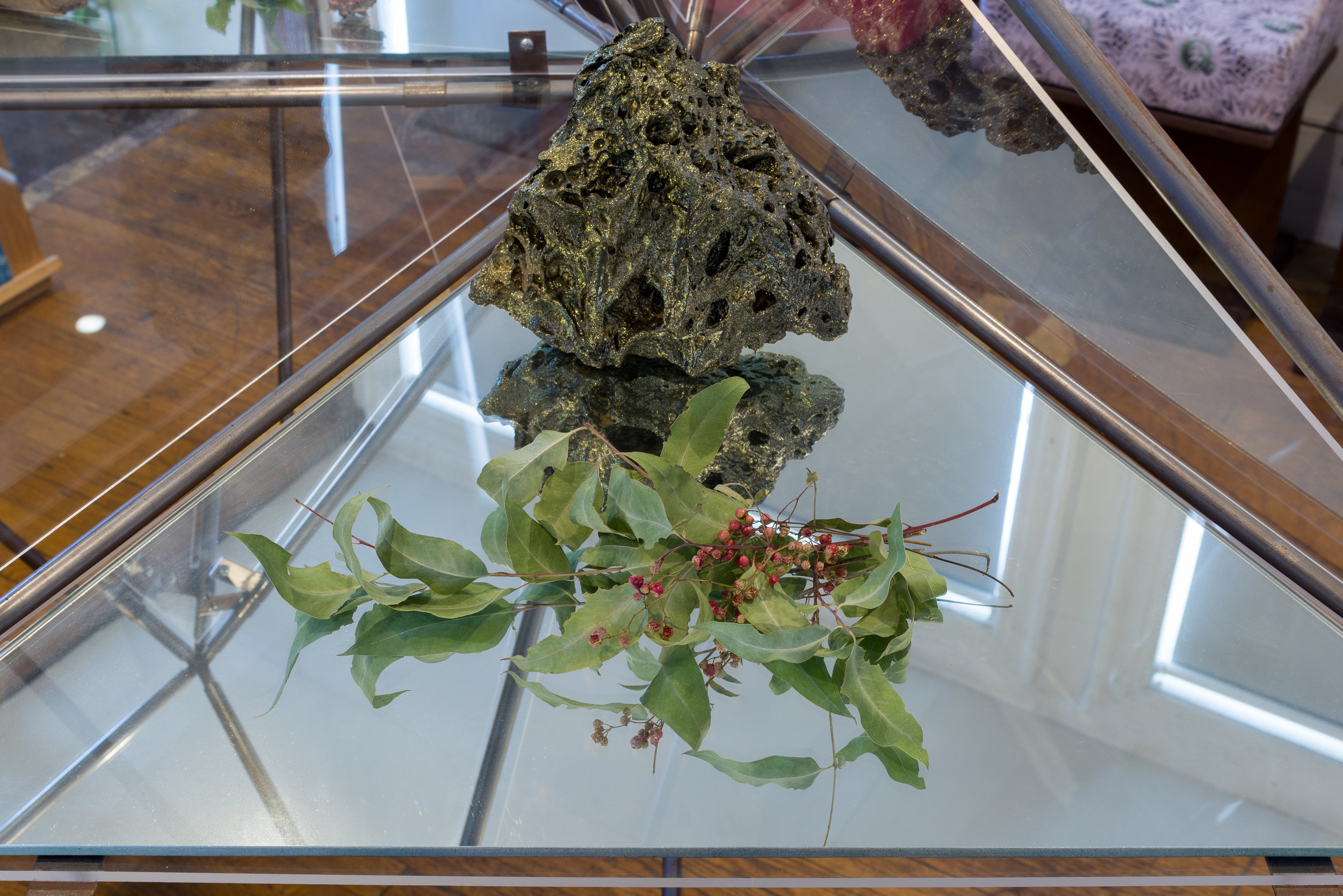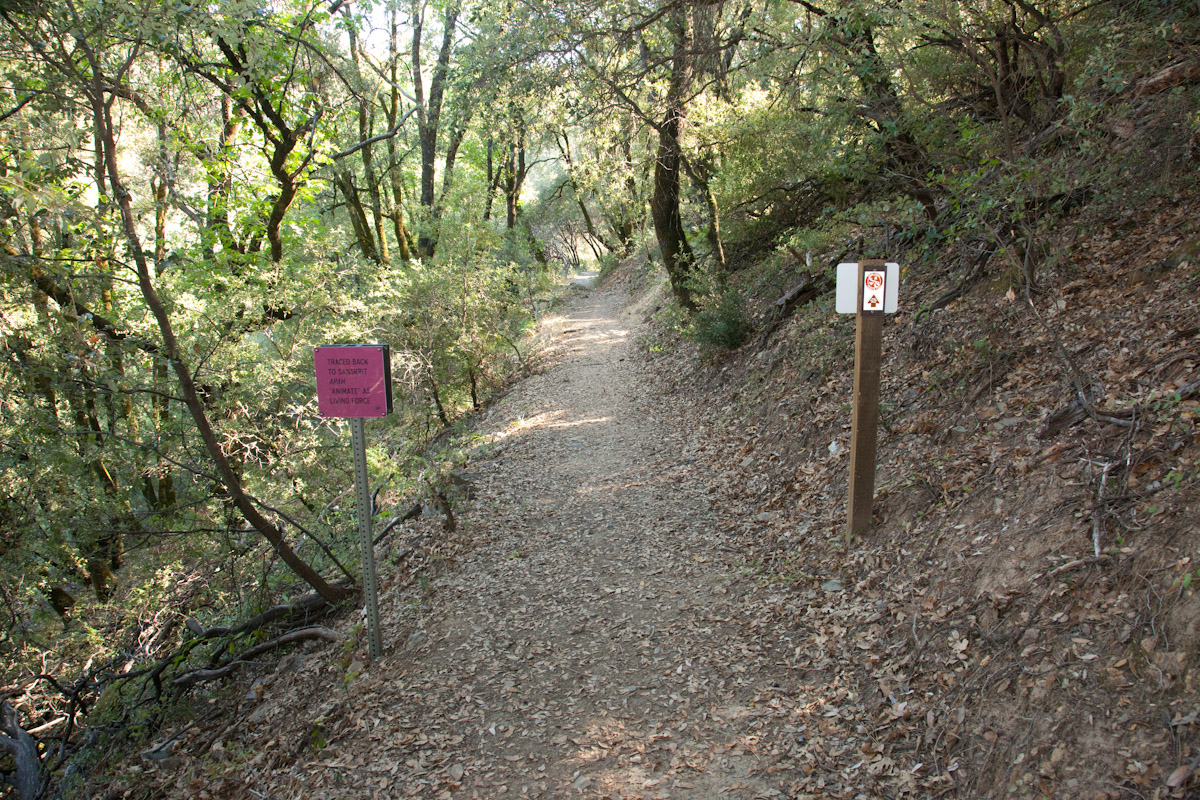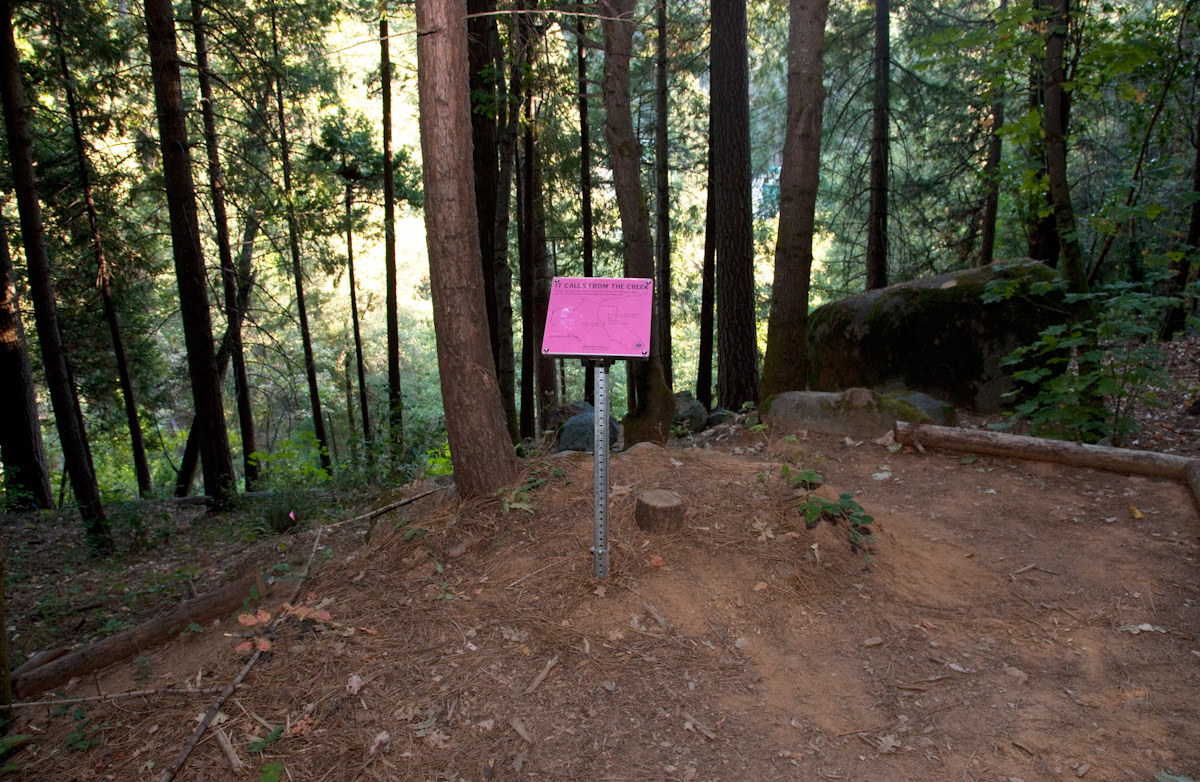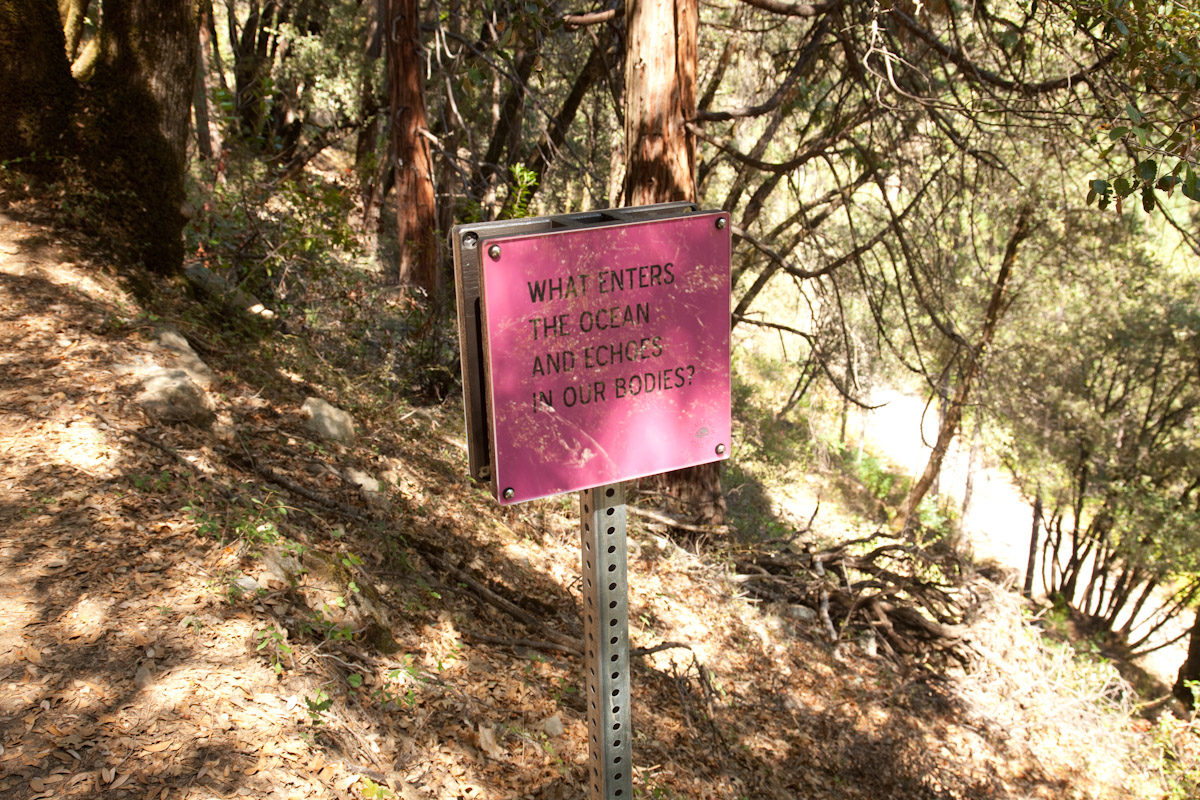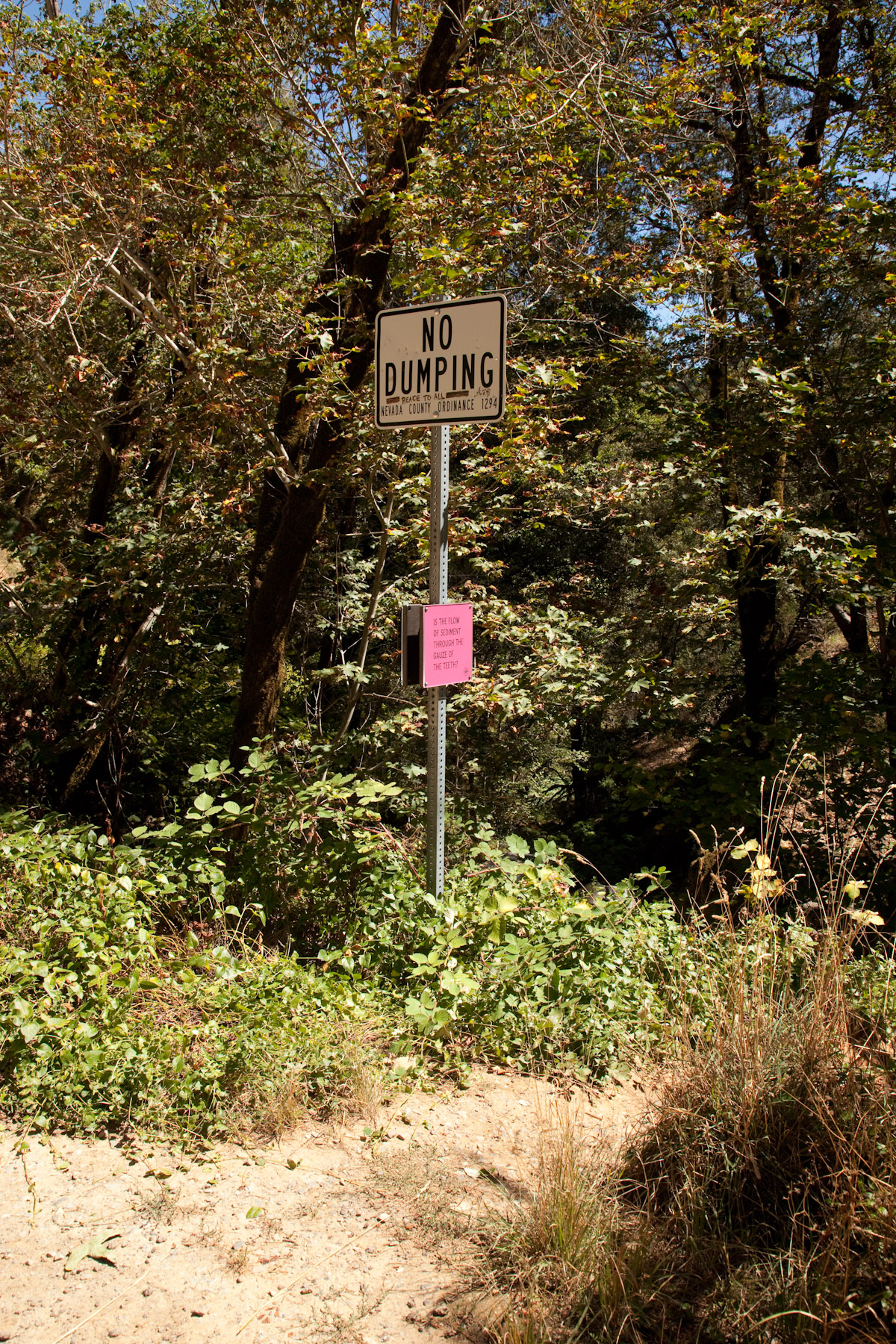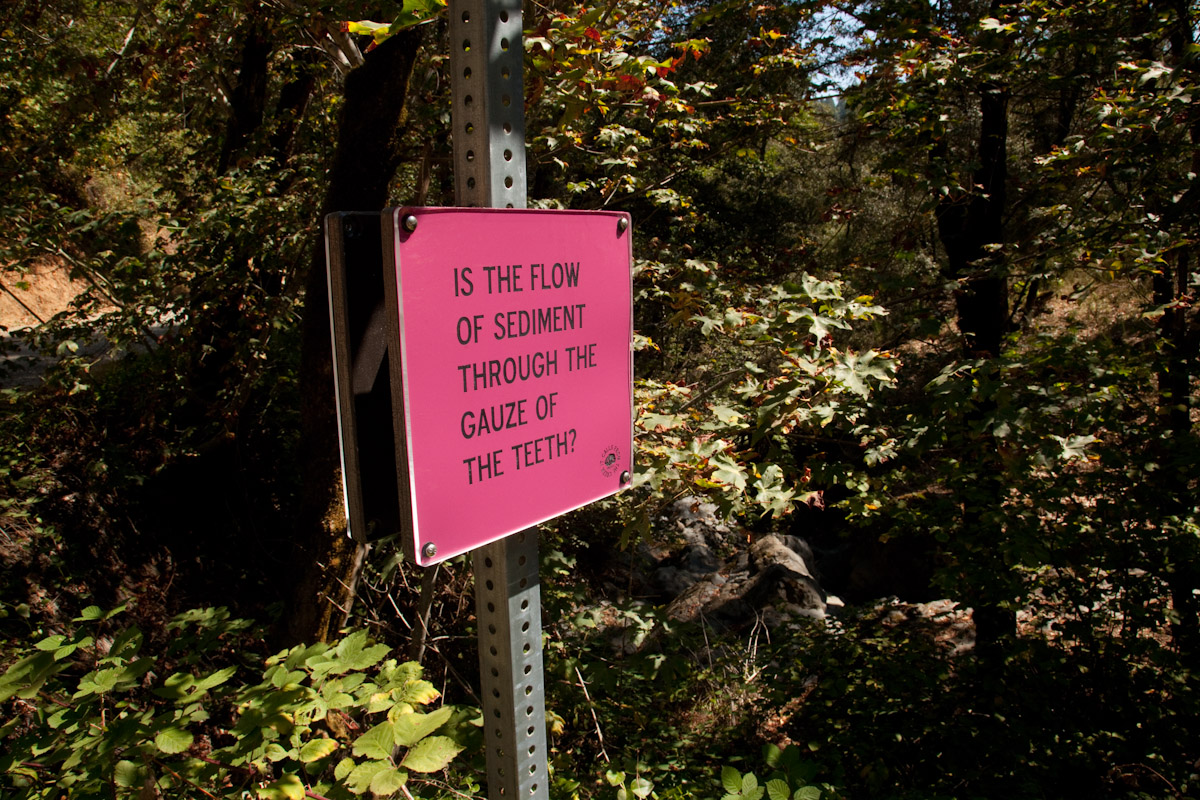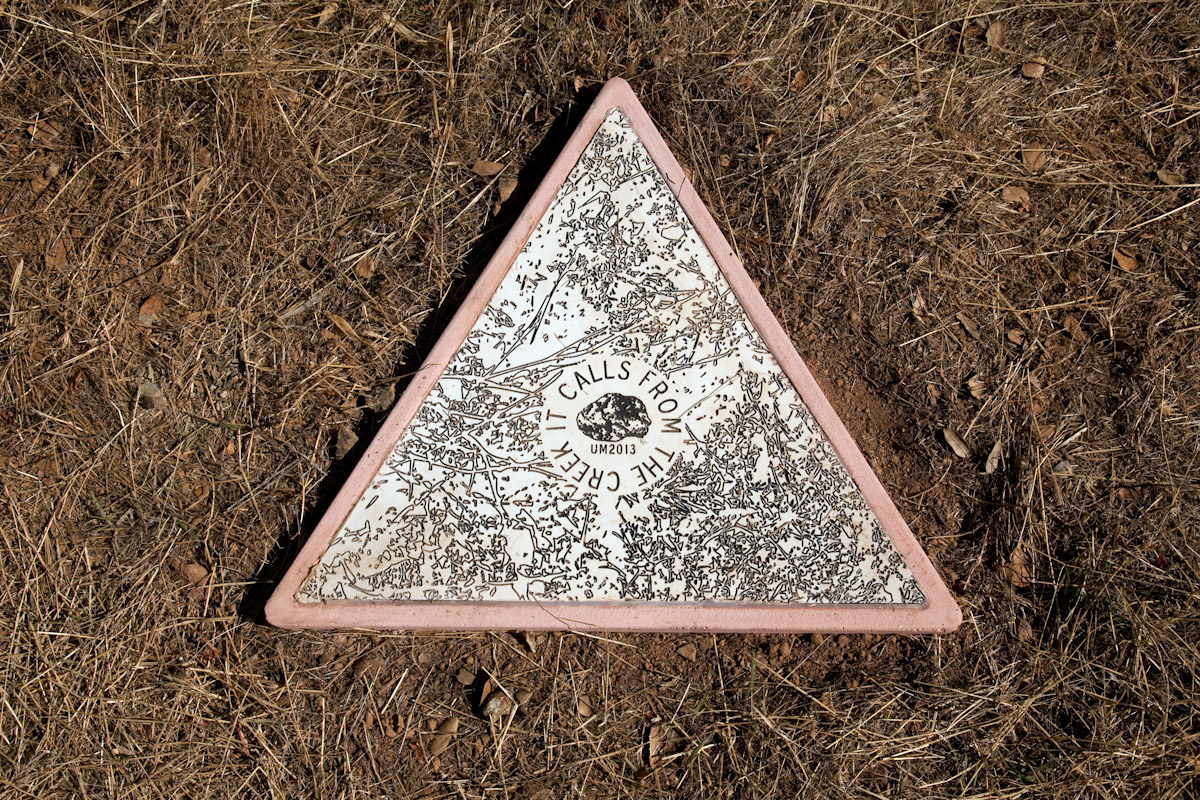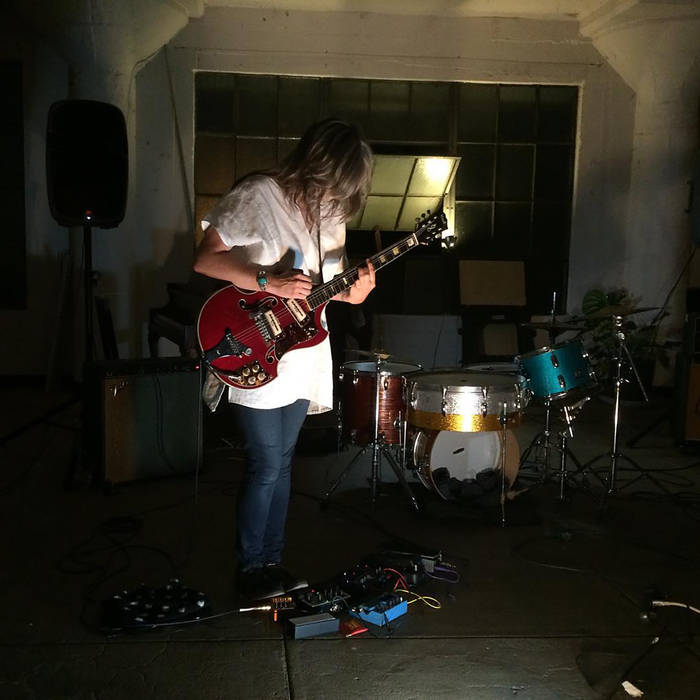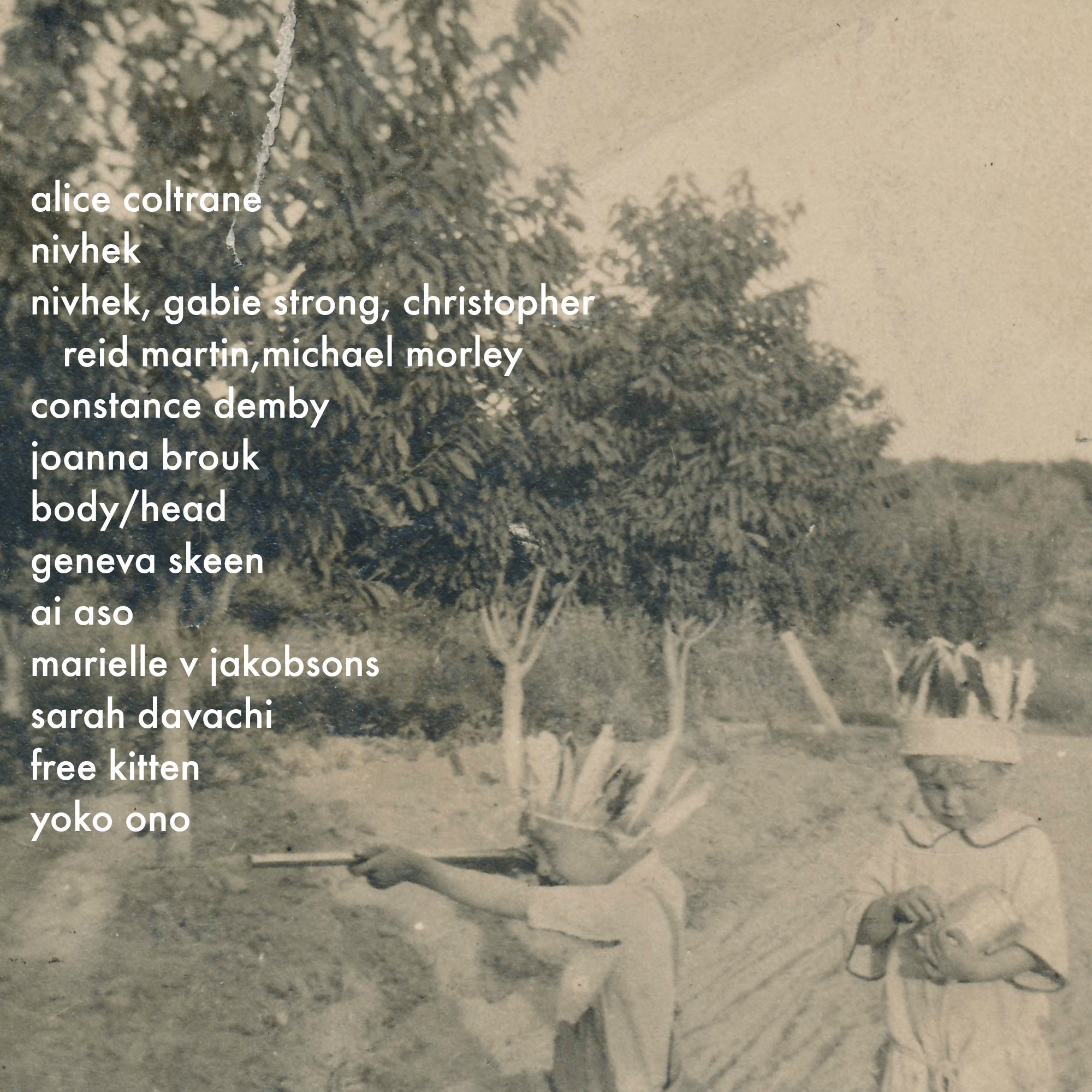MORPHOLOGY
an interview with interdisciplinary artist gabie strong
Image by Marcus Fischer
"I can only connect deeply or not at all." —Anaïs Nin
Through a vast body of work including sound, visual imagery, installation, and performance, Gabie Strong explores the entwined experiences of femininity, landscape, and decay. We are thrilled to share Gabie’s work with you in this issue of Cordella.
Cate Clother: When I first heard your work, I was stunned by the shape of you—a gentle, solitary form, sitting by a creek between field and forest, creating such emotive sound. How did you come to experimental/deconstructed/noise music as a mode of expression? What has influenced your work, both sonically and otherwise?
Gabie Strong: My practice incorporates research in landscape, environment and the feminine body, and currently I am exploring working in performance as a means to explore the areas of overlay between these three subjects. When I think of performance, I think of it as a successful way to immediately explore a situation. I use sound as an expressive means to sonically “paint” an immediate bodily response to place, and through that mode of working I also try to create a visual scene that reworks the whole experience.
I came to use experimental, deconstructed noise music because it was a natural extension of the critique embedded within punk and post-punk. I studied art and architecture instead of music, so I’m coming to music with a different language than trained composers. I am not very good at repetition or memorizing songs, so I improvise almost exclusively, even when playing solo. I may use a specific open tuning on guitar or rely upon preprogrammed effects as a set of tools, but I try to explore the immediacy of the conditions of the site in the moment while I am playing. Improvising without boundaries allows for a wide range of possibilities. I like the physical sensation of holding my guitar, vibrating its strings, mangling the sounds and getting immediate response out of the amp. The amp is my real instrument.
Instead of rehearsing I will take up a text, work of art or music, and focus on that before playing. It helps reduce the anxiety of performing in front of others, and enables me to think through ideas of staging. These things also help me focus on an outcome for the performance while I’m playing, as sometimes I get too self conscious or forgetful about time.
Image by Wild Don Lewis
A number of pioneering electronic composers from the mid to late 20th century were young women, trans and non-binary individuals who pushed traditional concepts of music into the way-beyond. Many of these composers are still living and producing albums in their 70s and 80s. I hope to learn from them as I enter my own midlife. It’s inspiring to me that a number of these womxn have just kept working regardless of the limited reception they had when they were younger. I am really grateful they kept recording and that there is an archive available to listen to today.
Cate: As a woman working in the community of experimental/noise music that has a strong male presence, have you been confronted by challenges in creating your work? How do you navigate them?
Gabie: It’s true that I have been challenged by the gender and age norms sometimes associated with the tropes of harsh noise, but I find that in general the noise community is very open to ideas and that as a whole they tend to really listen. Noise audiences are usually very kind and sensitive people, who have gravitated towards the uniqueness of strange sounds that most folks can’t bear to hear. If anything, I find that there is a funny prejudice against guitars and traditional rock instruments in the noise scene, but I think that comes out of that same social critique inherent in punk music. The harsh noise trope of exclusion—no melody or drone, only using electronics—makes me laugh. I often find harsh noise is immature and lacks dynamism, it sounds quite boring. It may have the impression of extreme violence but it offers little to the imagination, and instead is rendered impotent.
Cate: In addition to your music, you create objects, video and photography. What is a unifying impulse through this creative output?
Gabie: When I was growing up, and through high school to college, I never thought that I had to do one specific discipline or method of art making. I have always been interested in art, music and clothes, so I never really thought that they didn’t go together or that they had to be distinctly different from one another. My mother is an interior designer and my grandmother was a painter, and my other grandmother worked in a gift shop but her main passion was gardening, so I was exposed early on to women engaging in creative practices without much restriction other than economics. All were able to make work and raise families with what they had available. I think from that upbringing I never really questioned why, you know?
It’s challenging explaining this, as some artists think of me as a musician, and some musicians think of me as an artist. All my work is research based, and while that may slip between art theory, history, environment and autobiography, I tend to explore art processes that will generate successful outcomes. For example, a running theme is to explore concepts of noise and decay; so I might didactically render that through photographs of the drought at the edge condition of the desert and built environment, or make drawings out of salt on paper. Another way to explore that theme would be to take my guitar and throw it around to generate amplified feedback. I spent a lot of time in my youth worrying about my ideas, and what I could make from them, and if the ideas and the work would be good enough. Now I just try to make work and see what the work says.
Given, vitrine installation, Gabie Strong
Cate: You have a master’s degree in architecture—fascinating! Can you describe how you found your way to architecture, and then to your career as a musician? Do you see your music and interdisciplinary artwork entwined with architecture in any way?
Gabie: I had a BA in Art from UCLA, and while I was making music and visual art, I became unsure of myself as time progressed. At UCLA, my mentors Paul McCarthy and Richard Jackson were so influential that they gave my class the impression that we were super great and didn’t need grad school. Yet as time wore on, and I could not find work in art institutions, I felt I needed a badge to prove that I was capable. It’s very hard to explain but I was at a real low point in my self confidence. I was making photographs without much technical training, and researching landscape studies on my own. I started writing for a small zine, Great God Pan, that focused on California, and was asking myself if “art” was really where I belonged. I applied to a number of art graduate programs but didn’t get in, and on a whim applied to architecture school. I got in, and tried it, and hated it. It was a long, expensive, torturous and yet discursive route into art making.
After finishing my master in architecture I pursued an MFA in studio art. I’m especially interested in the built environment as a physical record of humanity writ on the land. I was able to develop a more robust knowledge about the built environment and even climate change through studying architecture, but I was and still am at odds with the institution itself. Architecture has a lot of self reflection to do—in my opinion architecture and urban design should operate more politically to meet the needs of the public ,to create sustainable and beautiful cities for all. Too much emphasis is on creating beauty for beauty’s sake—which means for the wealthy and privileged—absurdist antiquated thinking. Social practice should be located within architecture and urban design discourse. But until contemporary architectural design stops its navel gazing, cities will continually go through gentrification, evictions, and homelessness without much protest except from local activists and artists.
It Calls From the Creek, environmental installation, Gabie Strong
Cate: Your visual art has a concern with land and place. How did you come to feel a connection with land and place as a theme? What is your sense of connection or identity with your personal place/home?
Gabie: I moved around a lot in my youth. I was literally displaced. In some respects my interests in land, land use, landscape representation and the formation of cities comes from not knowing any one place. But I’m also interested in the places or agencies women have and do not have in society, and I’m curious about the correlation between social space and spaces of production.
Cate: Can you describe the relationship between crystalline formation and the music your record label, Crystalline Morphologies, seeks to represent?
Gabie: I discovered the term “crystalline morphologies” in a critical essay by Micheal Govan on Robert Smithson’s work. It was used to describe the method in which Smithson was working, taking multiple critical concepts and forming them into material representations. I thought it was a concise way to describe the music I was playing on my show because it seemed to embody both the sounds and the styles of music. I named my kchung radio show after the term, and after awhile my show gained so many dedicated followers that I wanted to continue the concept of curation as a publishing label.
Technically speaking, the term references the mineralogical process of crystal growth—the process by which organic materials take shape under the influence of environment and time.
As a musical concept, it speaks to the self-reflexive dialectic formed between structured electronic composition and improvisational performative acts as they unfold in the moment.
The curatorial focus is on publishing unclassifiable and improvised work by underrepresented Los Angeles women artists and allies, whose contributions are too often overlooked in the context of avant-garde music, whether it be composition, noise, or experimental improvisation.
Sacred Datura/Peaked Experience
Cate: You’ve been navigating some seriously traumatic health issues over the past several years. Do these specific life circumstances influence your self-expression? How personal is your work?
Gabie: Over several years I was slowly losing my hearing on the left side, and finally after having multiple MRI scans, my doctor discovered that I had a very rare hereditary condition of multiple exostoses in my inner audio canal. I was born with a very small left audio canal in my skull. Tiny fingers of bone were growing into the canal, compressing my auditory nerve, and ultimately causing deafness. Not only was my auditory nerve being compromised, but my facial and balance nerves were at risk for being damaged, too. So, I had a crazy five hour neurosurgery and craniotomy to remove the excess bone and widen the canal. The recovery from surgery has been very intense and painful, with unbearable headaches and neck stiffness. I had to have a cranioplasty revision in order to change the metal plate hardware, as the neurosurgeon had not put in the correct hardware after the first surgery, and it was moving around under my scalp. It’s taken a very long time to recover, and my life changed as a result of the pain.
I haven’t really engaged with my health through art yet. My hearing is already compromised, and making music and recording is quite challenging although I am used to it. I think part of the reason why I naturally am attracted to experimental and free music is that I likely hear it differently than a person with great hearing. My auditory nerve is compromised, so it jumbles the transmission of sound to my brain, and what my brain interprets is clearly subjective. I’ve spent quite a lot of time discussing what things sound like with others who are hard of hearing or have deafness, and they too hear sounds that are not necessarily present. I am interested in this process of the brain and nerves miscommunicating, and what the outcome may be. How can anyone be certain what we hear is accurate, if it is in reality a messy biological function of one organ interpreting information transmitted by an imperfect system?
Cate: Do you feel your identity as a woman comes into play in your vast creative output? If so, how?
Gabie: As an improviser I have to rely on my instinct and experience to create work in the moment, and while that implies an essentialist construction, it has everything and nothing to do with my sex. My own identification as a woman includes aspects of masculinity and femininity, queering of those tropes, as well as being a singular animal in a cosmos much larger than myself. I’m very interested in the concept of becoming, transitioning and morphosis. I think that is evident most especially in my music and sound art—you can hear it happen as the work unfolds. Sometimes I purposefully express it, as a means to form critique or to embed a gendered place. In many respects this is just a reflection of my own growing and maturing as a woman and a human animal. Menopause is on my personal horizon, and I’m curious about that transition from one state of womanhood to another. Like I just made it through two neurosurgeries and now I got some more weird shit happening to my body! It frustrates me that deafness is not discussed, disabilities are not discussed, and women’s physiological changes are considered taboo. I have joked with my girlfriends about starting a harsh noise project called Menopauser, where I scream into a mic and process it through effects for like either two minutes or two hours. I’m not sure how that will be received, but I kind-of don’t care.
Gabie created a stunning playlist for Cordella readers, featuring experimental musicians and eclectic composers. Click the playlist below to listen!
gabie strong
Gabie Strong is an interdisciplinary artist and educator exploring the politicized female body through sound performance and visual art. Strong has accumulated a robust series of performances and recordings that reconstruct her primary instrument, the guitar, into a conduit for thundering and transcendent drone. In addition to operating the Crystalline Morphologies label and djing on Kchung Radio and Dublab, she has also toured as a member of Michael Morley's Gate and collaborated with Christopher Reid Martin (Shelter Death), visual artists Renee Petropoulos and Kathleen Johnson, Joe Potts, (LAFMS) and Elaine Carey (Telecaves). Experience Gabie’s work at gabiestrong.com, and learn more about crystalline morphologies at crystallinemorphologies.com and on Instagram.
